








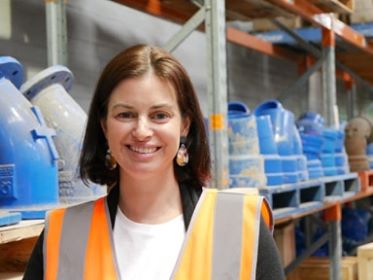
Innovation Manager at TasWater
I struggled in my role to penetrate in a creative way into the workplace. I was asked to come in and engage and innovate and it was a challenge.
So firstly, I wanted to be able to communicate with people in a better way and spark some enthusiasm. At our company, where things are run traditionally, we have a lot of documents, text and templates. But a large contingent of our workplace is field-based operators, people who don’t respond well to templates, instructions and thick manuals.
I find if I communicate in a more creative way, people then start thinking and interacting differently which results in better innovation.
Secondly, I wanted to bring visuals into our documentation. We are an organisation of strategies, visions and big documents that are often hard to read. Even before I came to the course I’d been trying to convert heavy text into visuals by presenting it in a more bite-size and aesthetically pleasing way, to make it more digestible for our customers or operation guys who don’t want to read a big document.
Generally, I wanted to find out more about graphic facilitation. I had seen graphic recording at a conference a few years prior and felt that we definitely needed more of that in our business.
I had seen bikablo online and that style appealed to me. I was curious about it. I stumbled across Visual Friends when I was searching for the right people who taught this technique. Unfortunately, there were no trainers in Tasmania and I would have had to travel to Australia to attend the training.
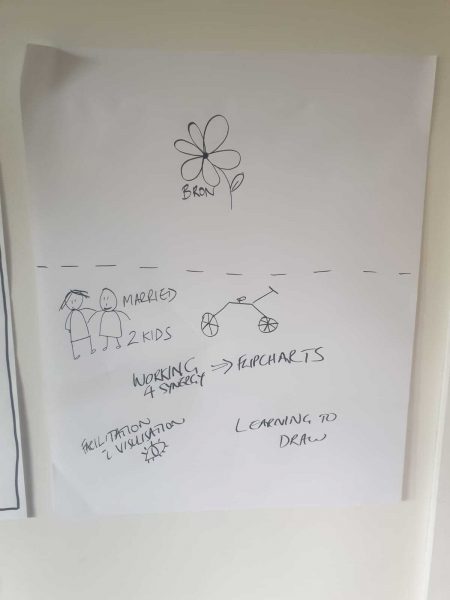
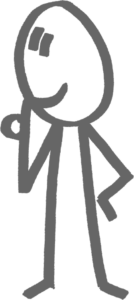
Beginning of Training Day 1
The online option was a much better option for me. Otherwise it would have meant three days (with travel) away from my family and taking time off work.
I had two very enjoyable days, they went really fast. There was plenty of time to ask questions or to go over things. There was a great balance between having time on and off screen. It didn’t feel like you had to sit and listen, there was always something to do. It worked really well, and I felt that I got so much out of the two days. I can’t think of anything I would change or suggest.
It was a bit overwhelming.
I remember looking at the first visual I did at the beginning of day one, how hesitant I was to put pen to paper. And then you look at your final poster, it’s like a totally different person drew it. It was hard to believe I achieved it in only two days.
I felt quite empowered having done the course and being able to actually produce something that big and with that much impact in only two days was amazing.
It’s not a complicated technical concept, it’s stripping it right back and making it as simple as possible. It’s a bit like Coco Channel’s advice, “put three things on and then take one thing off”.

End of Training Day 2
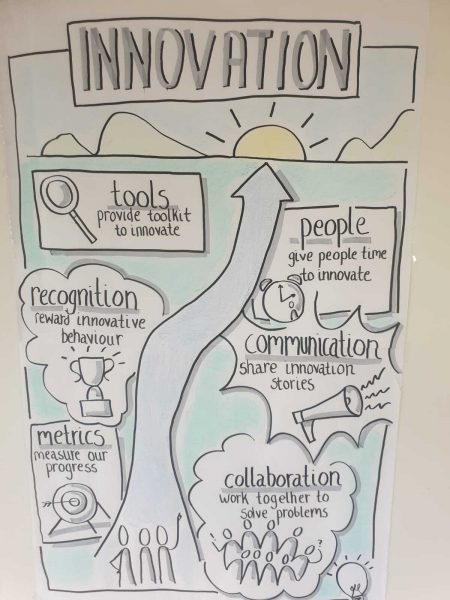
Yes! I have already done three posters for people at work in the first week after the training. A poster for diversity and inclusiveness, one for strategy, and a visual summary of top tips for working from home.
My CFO wrote to me the other day upon seeing some drawings, “This is incredible”.
I’m looking forward to bringing more visuals into my work. I’m so glad I have found Visual Friends.
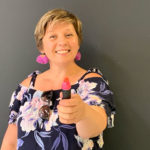
The article was written by Natalia Tsygankova. Natalia has always loved words and talking to people. She has put that passion to good use and has been sharing people’s stories in the community radio, TV and print media for the last 10 years. Natalia is also a big fan of true storytelling events and regularly volunteers at the most famous one – The Moth, interviewing the winner. You can hear her own story of moving to Australia from Russia in 1999 here. Natalia believes that everyone has a story – So what’s yours? Contact her today to share your story.

